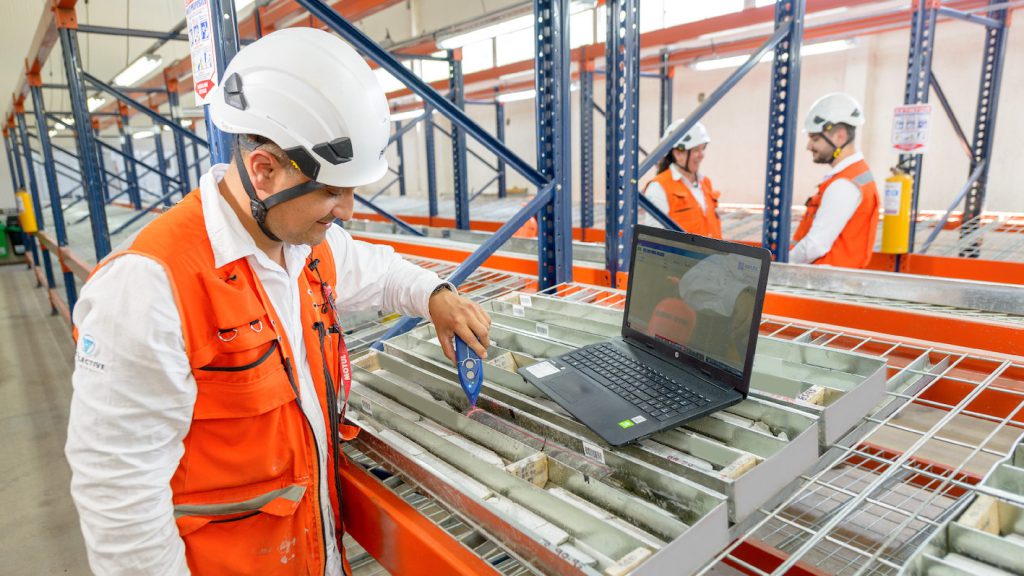Collective Mining drills 1.71 g/t AuEq over 792.25 metres at Guayabales, Colombia

Collective Mining Ltd. [CNL-TSXV; CNLMF-OTCQX] reported assay results from two drill holes designed to test depth extensions and high-grade mineralization within the Apollo porphyry system at the Guayabales project located in Caldas, Colombia.
Apollo is a high-grade, bulk-tonnage copper-silver-gold system, which owes its excellent metal endowment to an older copper-silver and gold porphyry system being overprinted by younger precious-metal-rich, carbonate base metal vein systems (intermediate sulphidation porphyry veins) within a magmatic, hydrothermal inter-mineral breccia and diorite porphyry bodies currently measuring 455 metres by 395 metres by 915 metres, and open for expansion.
Ari Sussman, executive chairman, commented: “The Apollo system continues to deliver unusually high-grade intercepts for a porphyry deposit over significant core lengths, with today’s results being two of the longest holes ever drilled by the company. I am most pleased that mineralization in both holes began directly from surface and the size of the Apollo system was once again expanded as a result of APC-55. I am excited about the prospect of what the Guayabales project will deliver in the second half of 2023 as we embark on the aggressive growth phase of our 2023 drilling program, where expansion of the Apollo porphyry system and making a new discovery are our top priorities.”
The 2023 Phase II drilling program is advancing on schedule with 24 holes completed and results announced with an additional nine holes awaiting assay results from the lab. The objectives of the 2023 program are to define high-grade mineralization, the dimensions of the Apollo porphyry system near surface, expand the size of the system through step-out and directional drilling and drill test multiple new targets generated through grassroots exploration. Since the announcement of the discovery hole at Apollo in June 2022, a total of 55 drill holes (approximately 23,907 metres) has been completed and assayed.
This press release outlines results from two, long step out holes. APC-49 and APC-55 were drilled to test high grade, shallow mineralization, and depth extensions in previously undrilled areas. Both holes were drilled from Pad 6 with APC-49 directed steeply to the northwest and APC-55 drilled to the northeast. Results for these holes are summarized below:
APC-49 was drilled steeply to the northwest from Pad 6 to a maximum downhole depth of 852.90 metres (908 metres vertical due to topography). The hole was designed to test the northwestward continuity of the deposit at depth. The hole bottomed in mineralization due to drilling problems with the last 15.85 metres from 837.1 metres downhole returning 0.52 g/t gold equivalent. Highlights as follows: 847.25 metres of 1.09 g/t AuEq (gold equivalent) from 5.65 metres (consisting of 0.64 g/t gold, 16 g/t silver and 0.14% copper), including 22.9 metres of 1.36 g/tAuEq from 5.65 metres downhole in the oxide plus transition zone, 42.35 metres of 2.78 g/t AuEq from 491.5 metres downhole in a CBM rich zone and 30.95 metres of 2.12 g/t .AuEq from 625.6 metres downhole in a CBM rich zone.
APC-49 confirms that the system remains wide open at depth in the northwest area of the deposit and future directional drilling will look to expand the system and tighten up drill spacing.
APC-55 was drilled to the northeast from Pad 6 and was designed to test for an extension of shallow high-grade mineralization to depth within the northeast portion of the Apollo system. The hole was drilled to a maximum downhole depth of 909.45 metres (855 metres vertical) with mineralization beginning at surface. Highlights as follows: 792.25 metres of1.71 g/t AuEq from surface (consisting of 0.88 g/t gold, 39 g/t silver and 0.18% copper) including 48.8 metres of 3.23 g/t AuEq from surface in an oxide plus transition zone, 21.55 metres of 3.66 g/t AuEq from 184.7 metres downhole in a CBM rich zone, 31.05 metres of 2.37 g/t AuEq from 364.2 metres downhole in a CBM rich zone, 21.65 metres of 2.36 g/t AuEq from 431.75 metres downhole in a CBM rich zone and 16.50 metres of 2.34 g/t AuEq from 591.5 metres downhole in a CBM rich zone.
APC-55 returned 1,356 g/t gold equivalent on a grams X metres basis, which represents the largest grade accumulation drilled to date into the Apollo porphyry system. APC-55 has also extended the strike length of the mineralized system to the northeast with maximum known overall dimensions now measuring 455 metres by 395 metres by 915 metres.
Nine additional holes have been completed at the Apollo system with assay results expected in the near term with all holes except one intersecting bulk tonnage mineralization over significant core lengths.
The Apollo target area, as defined to date by surface mapping, rock sampling and copper and molybdenum soil geochemistry covers a 1,000 metres X 1,200 metres area and represents a large and unusually high-grade Cu-Ag-Au porphyry system. The Apollo target area is still expanding as the company’s geologists have found multiple additional outcrop areas with porphyry veining, breccia, and late stage, sheeted, carbonate base metal veins.
The company has options to acquire 100% interests in two projects located directly within an established mining camp with ten fully permitted and operating mines.
The company’s flagship project, Guayabales, is anchored by the Apollo target, which hosts the large-scale, bulk-tonnage and high-grade copper-silver-gold Apollo porphyry system.
Management, insiders and close family and friends own nearly 45% of the outstanding shares of the company and as a result, are fully aligned with shareholders.
